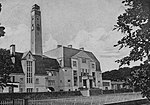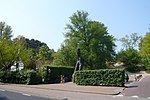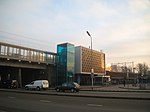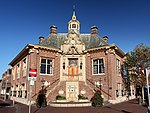Bentveld
BloemendaalNorth Holland geography stubsPopulated places in North HollandZandvoort

Bentveld is a village in the Dutch province of North Holland. It is a part of the municipality of Zandvoort, and lies about 5 kilometres (3 mi) west of Haarlem. Part of the village is located in the municipality of Bloemendaal, however it can be considered annexed since 1978.The village was first mentioned in 1615 as Bent Velt, and means "field of moor grass (Molinia). Bentveld started to developed after the tram line Zandvoort to Haarlem was constructed in 1899. The tram operated until 1957.
Excerpt from the Wikipedia article Bentveld (License: CC BY-SA 3.0, Authors, Images).Bentveld
Zandvoortselaan, Zandvoort
Geographical coordinates (GPS) Address Nearby Places Show on map
Geographical coordinates (GPS)
| Latitude | Longitude |
|---|---|
| N 52.365833333333 ° | E 4.5716666666667 ° |
Address
Zandvoortselaan
Zandvoortselaan
2116 EN Zandvoort
North Holland, Netherlands
Open on Google Maps









